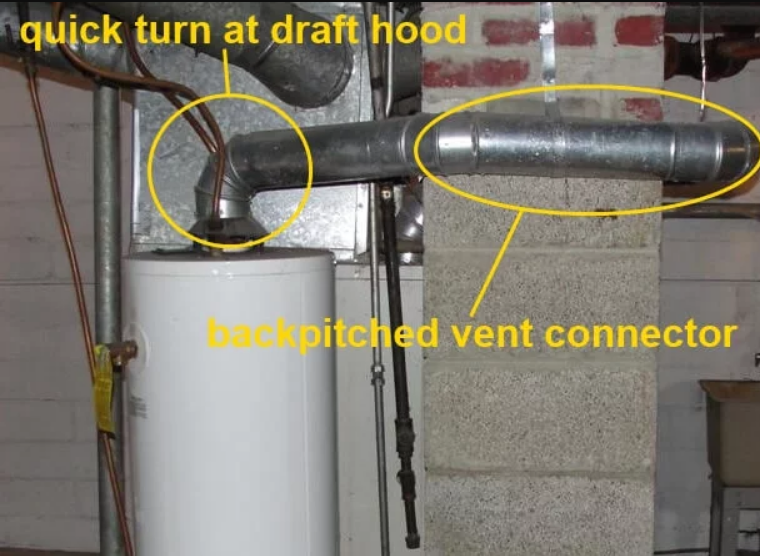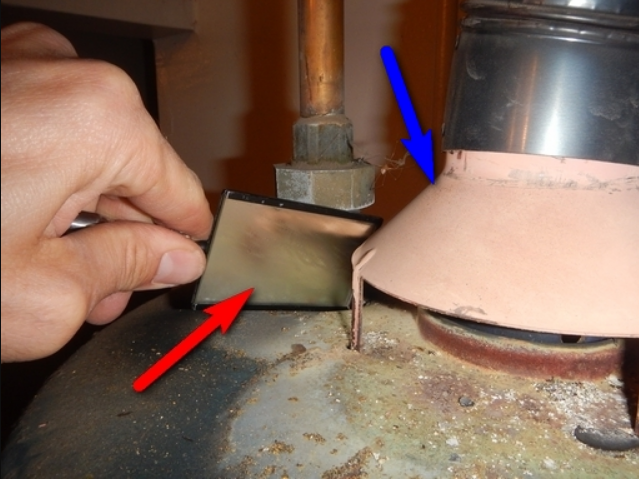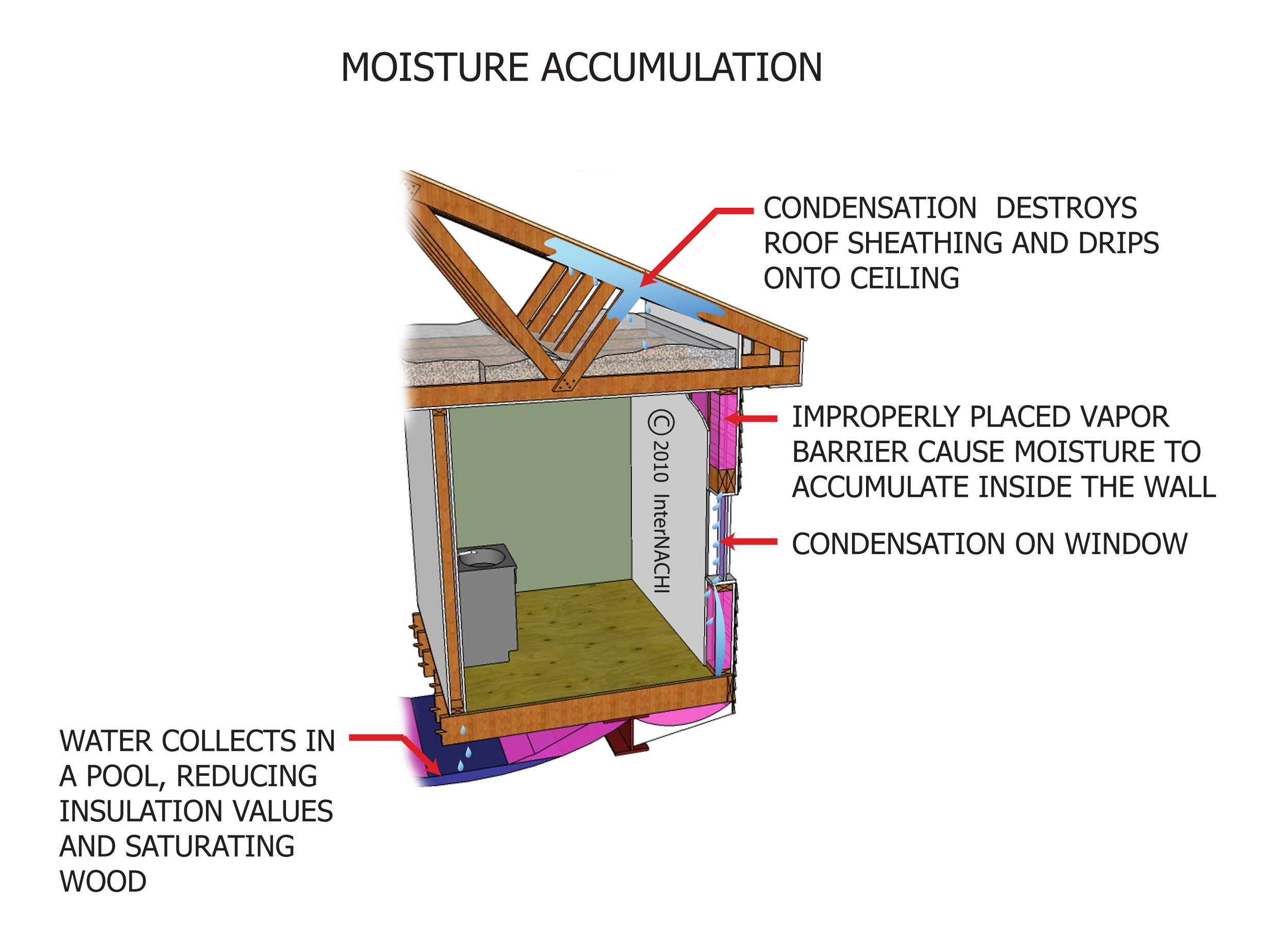Backdrafting at a water heater is a common defect identified during home inspections, and it’s almost always a condition that the homeowner or occupant is not aware of. This happens when the exhaust gases from an atmospherically vented water heater spill out into the room, rather than safely leaving the house through the vent. Exhaust gases contain carbon monoxide and high levels of moisture, so this is always a condition that should be corrected.
An atmospherically vented water heater is a type with a draft hood, which relies on gravity to get the exhaust gases out of the home. Exhaust gas is hot and therefore lighter than the surrounding air, which is what allows it to rise up the vent and out of the house. These are very simple devices that require no electricity to operate, however, this isn’t a very reliable draft method. Today I’m going to share some clues that could indicate a problem with a water heater drafting properly.
Backdrafting exhaust gases can condense at the top of the water heater tank. Over time, this corrosive condensate will begin to corrode the top of the tank. A leaking shutoff valve can also cause corrosion at the top of the tank, but that type of corrosion is easily distinguishable back corrosion caused by backdrafting because the worst area will be located directly below a valve.
If you can see condensation at the top of a water heater tank, you’re basically watching the water heater backdraft. The photo below shows moisture, rust, and melted plastic at the top of the water heater.
The vent connector at a water heater needs to pitch upwards towards the vent, and should ideally not have any quick turns, especially right at the draft hood.
If you find these types of clues, there might be a problem with the water heater drafting properly.
I have several different tools that I can use to check for proper draft at a water heater if I’m feeling fancy, but there’s really no need. If I want visual evidence to put in an inspection report, I usually hold a mirror up the draft hood and take a picture of the mirror getting fogged up.
Any water heater backdraft condition should be evaluated and corrected by a qualified professional.











